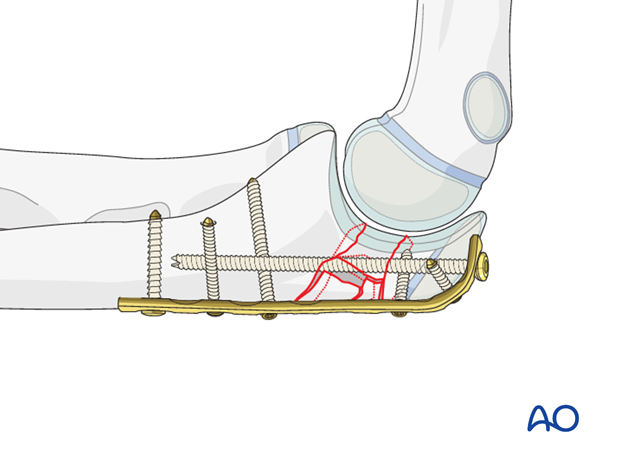Decision making and timing of treatment
1. Proximal ulnar fractures
The triceps is attached to the olecranon and in displaced fractures will pull on the fragment and delay or prevent healing.
Sleeve fractures can occur where the fragment appears on plain x-ray to be extraarticular but in fact carries a large section of articular cartilage. This may require MRI scan, arthrogram and/or open reduction.
Complex intraarticular fractures of the proximal ulna occur mostly in older children and require accurate open reduction and fixation as in adults. This includes fracture dislocation with disruption of the coronoid process.
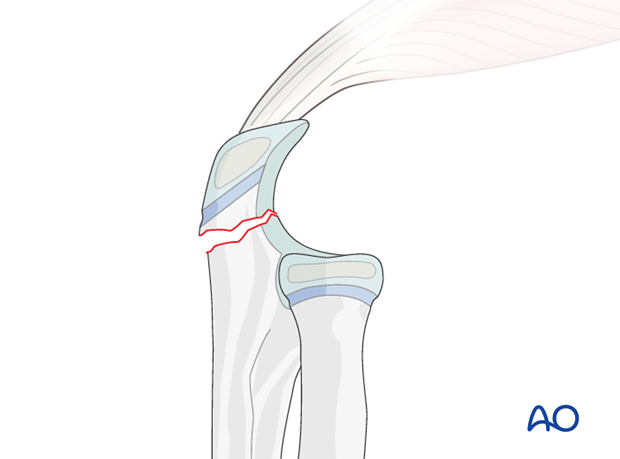
2. Proximal radial fractures
Mostly these are physeal or metaphyseal fractures of the radial neck. If the head is a single fragment these can be treated the same. Conservative treatment is appropriate if there is no displacement and angulation less than 30°. If these criteria are not met, then reduction +/- fixation will be required.
Displaced intraarticular fractures (SH III or IV) require accurate reduction fixation and early movement (immobilization less than 3 weeks).
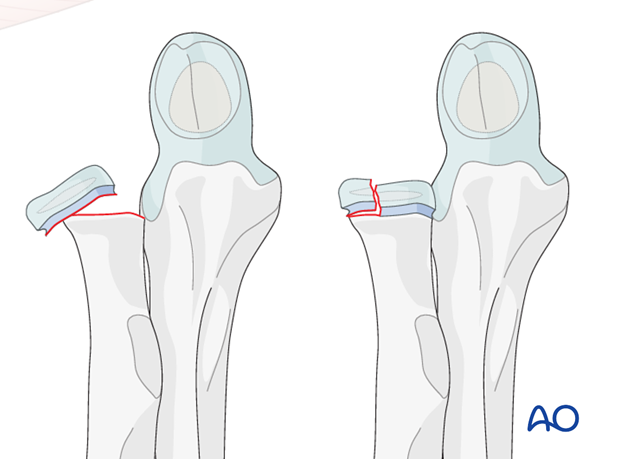
3. Monteggia equivalent fractures of both bones
If the child is young these fractures may be difficult to diagnose as radial head may not yet be ossified. An arthrogram may be helpful.
Accurate reduction and fixation maximizes function. Elastic nailing of both bones could be considered.
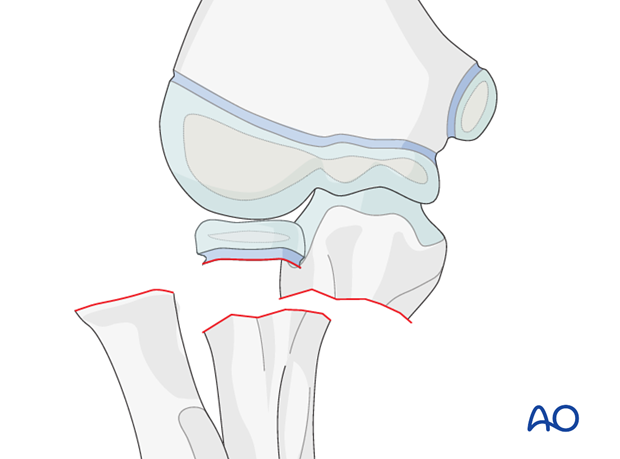
4. Timing of treatment of fractures of the proximal forearm
Depending on the type of fracture, different factors have to be taken into account regarding timing of treatment.
Open fractures and fractures with vascular compromise are indications for emergency surgery.
In all other circumstances delaying treatment by 12-24 hours has no negative effect on the outcome following closed reduction.
The following points influence the timing of the treatment:
- Availability of surgical resources
- The patient should be treated on a routine operating list within 24 hours of injury. Temporary plaster splint immobilization and elevation of the elbow joint are recommended for pain management.
- Children’s fractures quickly begin to heal. Closed reduction and ESIN of the proximal radius should not be delayed as callus forms within days in this location.
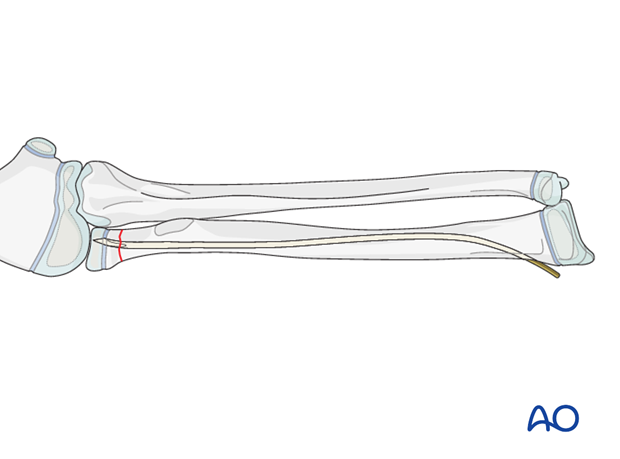
Intraarticular fractures of the proximal ulna do not require emergency surgery.
Surgical treatment of this fracture can be delayed by 2-3 days following injury.
Availability of appropriate surgical expertise is more important than early surgery in this fracture.
Temporary plaster splint immobilization and elevation of the elbow joint are recommended for pain management.
